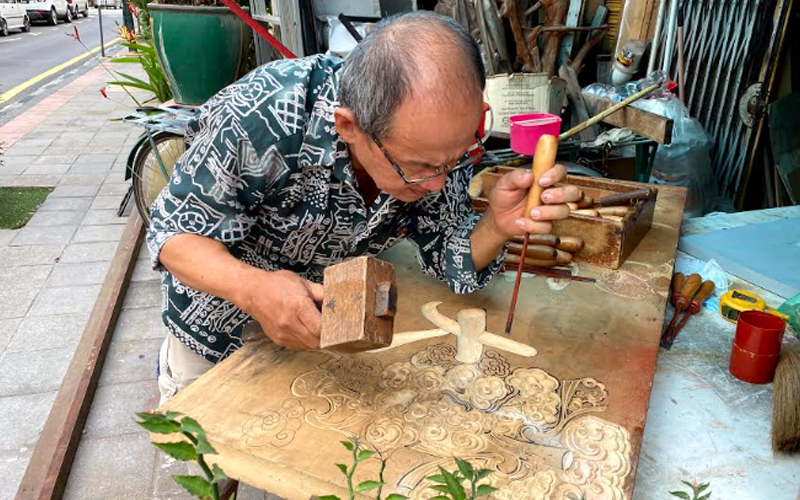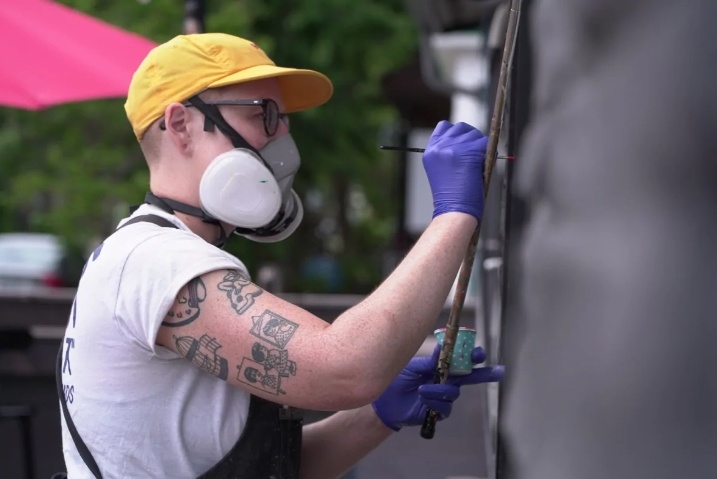Rare Chinese sign maker may have to close down due to Coronavirus.

Traditional Chinese signage artist Lee Teik Chye had often thought that his business would someday come to an end since none of his children was interested in carrying on the family legacy of specialist woodcarvers.
But when the Covid-19 lockdown came in March, he knew that the demise of his unique trade was imminent. There have been no new orders, making it hard for him to pay the rent for the Acheen Street shop where he plies his trade.
“I’ve been paying the rent for the past three months when I can’t even open shop and there are no new orders at all!
“I don’t think I can take it anymore. If there is still no business in the coming months, I have no choice but to close shop.”
Lee, 63, is one of three in the trade who still carve by hand. Others use machines.
Until the lockdown, he was highly sought after because he specialises in the kind of three-dimensional art that is attainable only through hand carving.
He has six children. Five are not interested in learning the trade. The one who did show interest when he was a child has become an invalid because of a road accident.
Lee learnt the art of carving from his father, who was born in China’s Fujian province. He started when he was seven. When he was 25, he took over the business at the back lane of his family home.

Fifteen years ago, he decided to rent the current shop. He said he had looked for other shops in town, but the rent was too much, leaving him with no choice but to remain where he is.
Some of the signs he makes are hung at the doors of homes. These spell out the surnames of the households and they are believed to attract luck and prosperity to the homeowners.
There are also signs with proverbs or words of appreciation and gratitude. These are usually ordered by people who want to give others as gifts. They would often be found in the offices of doctors and lawyers, Lee said.
The signs are made from large chunks of wood, typically from the hardy Jelutong tree. But since Jelutong has become rare and expensive, he would now use the wood of farmed trees such as Meranti and Batu.
Most boards take at least two weeks to complete, but the more complex ones take about a month.
The process begins with the flattening of large chunks of wood, which are then cut into certain sizes. Then, the Chinese characters and motifs such as clouds or dragons are carved.
Afterwards, a layer of putty is applied and dried in preparation for paint, typically gold for the characters on a black background.
Lee said he was willing to teach the art to anyone interested to learn, but the person must promise to work at his shop for at least a year









Responses